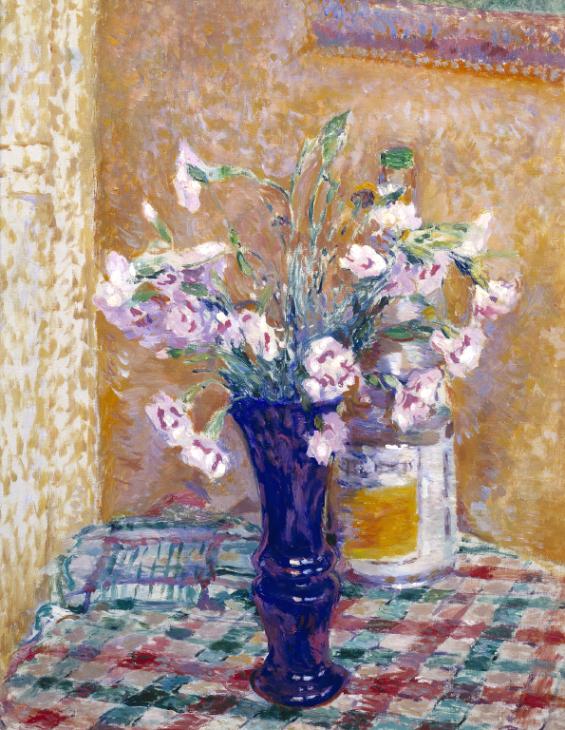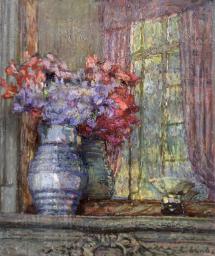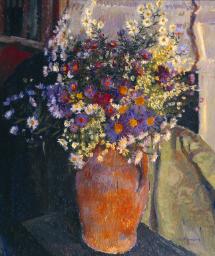Pinks in a Vase is painted on primed, stretched linen canvas. The cloth has a plain, very fine weave and it is attached with steel-coated tacks to a softwood stretcher; ‘Made in England’ is stamped onto each of the four stretcher members. The canvas appears to have been commercially prepared with an animal glue sizing and white oil-type priming, which has been smoothly and evenly applied and retains little of the fine texture of the cloth.
The artist initially drew in the main compositional elements in thinned blue paint working directly onto the white ground; this is found in all of his works in the Tate collection. The background was then blocked in leaving an unpainted area of reserve for the flowers. The wall to the left in the light and the gingham table-cloth were also probably left unpainted at this stage and were later integrated into the picture by sparing use of short brushstrokes, leaving the priming exposed. The bottle and vase are most densely painted with fluid intermixed colours. The flowers are delicately rendered with a few deft impasto touches. A few final dabs of cool light grey to the left wall soften the density of paint and introduce a sense of light and atmosphere. The painting appears to have been quickly executed from life and the surface remains unvarnished.
Roy Perry and Sarah Morgan
October 2004
How to cite
Roy Perry and Sarah Morgan, 'Technique and Condition', October 2004, in Robert Upstone and Helena Bonett, ‘Pinks in a Vase c.1940 by James Bolivar Manson’, catalogue entry, February 2011, in Helena Bonett, Ysanne Holt, Jennifer Mundy (eds.), The Camden Town Group in Context, Tate Research Publication, May 2012, https://www.tate.org.uk/art/research-publications/camden-town-group/james-bolivar-manson-pinks-in-a-vase-r1135623, accessed 18 December 2025.




